Like other reptiles, Sudan plated lizards are cold-blooded, which means that their body temperature is dictated by the temperature of their environment, instead of being able to maintain their own body temperature like humans and other mammals can. This means that your Sudan plated lizard tank needs to offer a range of temperatures so they can cool down when they get too hot, and warm up when they’re feeling too cold. This is called thermoregulation.
Observations of wild Sudan plated lizards correlate closely with distribution maps for the Tropical Savanna biome in Africa. This is also known as a Wet-Dry Tropical climate. This climate has two seasons: a long dry season and a short wet season. Average air temperature rarely get much above 90°F (33°C) during the hottest months, and even during the cooler dry season, monthly temperatures are consistently above 65°F (18°C) air temperature.
A good Sudan plated lizard tank must offer hot basking temperatures during the day and a cooldown at night:
- Basking surface temperature: 105-115°F (40-46°C)
- Cool side temperature: 75-80°F (23-26°C)
- Nighttime temperature: 60-72°F (15-22°C)
The heat sources should be turned on/off at the same time as the light source so temperatures can naturally drop during the night. A lightless heat source such as a ceramic heat emitter is not necessary unless nighttime temperatures drop below 60°F/15°C.
How to measure temperature: Infrared thermometers (also known as temperature or temp guns) can be used to accurately measure surface temperature, and are commonly used to measure basking and body temperatures of wild reptiles. I recommend the Etekcity 774. A digital probe thermometer can be used to measure your air temperature — we recommend the Zoo Med Digital Thermometer for this, with the probe placed on the warm end of the enclosure.
Having both tools is important because while high basking surface temperature is a good thing, air temperatures that are too high can quickly kill a reptile from heat stroke if it can’t escape to a cooler area!
What should you use for heat?
There are lots of ways to heat a reptile enclosure, but not all of them are good practice (or even effective) for a Sudan plated lizard. As it turns out, there are multiple different types of infrared (heat), and the differences between them matter.
Infrared A is the strongest wavelength of infrared, and penetrates deepest into animal tissue for efficient heating. IR-A is naturally produced by the sun, and artificially produced by metal halide and halogen bulbs. This wavelength also has healing properties.
Infrared B is the second-strongest wavelength of infrared, and also has deep penetration properties, but not quite as deep as IR-A. IR-B is naturally produced by the sun, and artificially produced by metal halide and halogen bulbs, as well as deep heat projectors.
Infrared C is the weakest wavelength of infrared, also known as radiant heat. It is unable to penetrate past the skin surface, making it inefficient as a basking heat source. IR-C is produced when IR-A and/or IR-B come in contact with a surface, so it is not produced in significant quantities by the sun. IR-C is artificially produced by deep heat projectors, ceramic heat emitters, radiant heat panels, heat mats, and heat tape.
For more information, read “Next Level Heating: Why Infrared Wavelengths Matter” by Roman Muryn and “Fire — The Sun: Its Use & Replication Within Reptile Keeping” by John Courteney-Smith.
The best way to provide high quality, short-wave infrared heating to your plated lizard is with incandescent or halogen flood bulbs. In order to create a large enough basking area to evenly heat your pet’s entire body, you will need **at least 2 heat bulbs** placed next to each other.
ReptiFiles’ Recommended Heat Lamps
BEST: Reptile Systems Infrared Gold Unit, 200w
Halogen bulbs (mounted over mesh):
Incandescent spot bulbs (mounted inside the enclosure):
What wattage should the heat bulb be?
This is a common question with no solid answer, sorry! But generally speaking, if your basking surface is 8-12” / 20-30cm away from the heat bulb, then a 90-100w halogen or 150w spot bulb should work. Exactly what wattage bulb you will need depends on room temperature, enclosure height, distance between the heat source and basking spot, and which bulb you’re using.
What works for one person won’t always work for another, so expect to have to try at least two different wattages when setting up the enclosure.
Where should you put the heat lamp in a Sudan plated lizard enclosure?
In order for your plated lizard to be healthy, it needs a temperature gradient. A temperature gradient (sometimes also called a thermal gradient or heat gradient) is the range of temperatures within your reptile’s enclosure. The easiest way to do this is by putting the heat lamp on one side of the cage. The side underneath the heat lamp then becomes the warm side, while the opposite becomes the cool side. Temperatures between the two sides will naturally flow from high to low depending on distance from the heat lamp.
This page contains affiliate links.
Keep reading about plated lizard care:
- Introduction to Sudan Plated Lizards
- Shopping List
- Enclosure Size Requirements
- Enclosure: Lighting & UVB Requirements
- Enclosure: Heating & Temperature Requirements
- Enclosure: Humidity Requirements
- Enclosure: Choosing a Substrate
- Decorating the Enclosure
- Feeding Your Sudan Plated Lizard
- Handling and Taming Tips
- Common Illnesses and General Health Information
- Additional Resources
Tell your friends -
- Click to share on Facebook (Opens in new window) Facebook
- Click to share on X (Opens in new window) X
- Click to share on Tumblr (Opens in new window) Tumblr
- Click to share on Reddit (Opens in new window) Reddit
- Click to share on Pocket (Opens in new window) Pocket
- Click to share on WhatsApp (Opens in new window) WhatsApp
